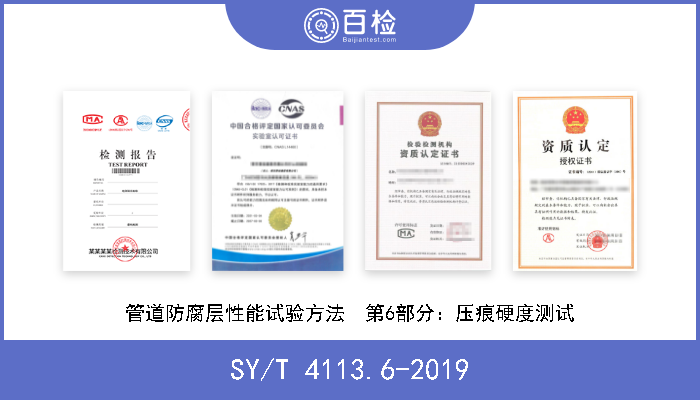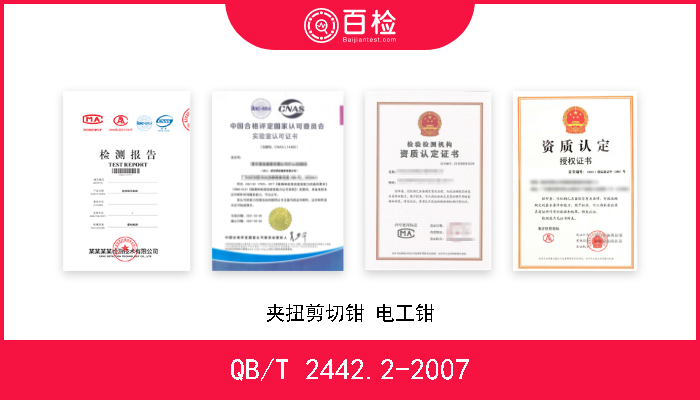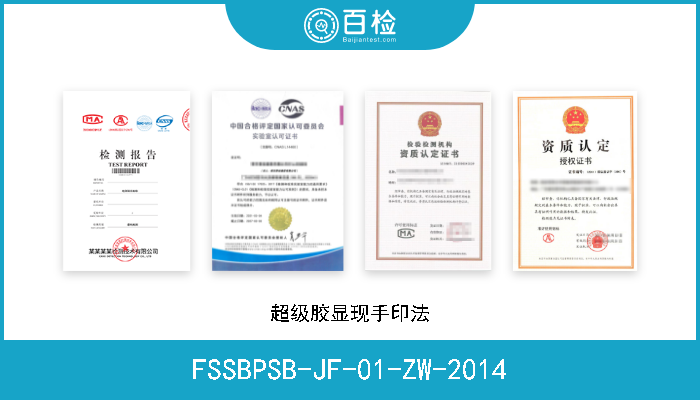IEC 61097-2-2008 全球海上遇险和安全系统(GMDSS).第2部分:COSPAS-SARSAT EPIRB.工作在406MHz的卫星紧急定位无线电导航台.操作和性能要求、测试方法和要求的
百检网 2021-07-15
标准号:IEC 61097-2-2008
中文标准名称:全球海上遇险和安全系统(GMDSS).第2部分:COSPAS-SARSAT EPIRB.工作在406MHz的卫星紧急定位无线电导航台.操作和性能要求、测试方法和要求的试验结果
英文标准名称:Global maritime distress and safety system (GMDSS) - Part 2: COSPAS-SARSAT EPIRB - Satellite emergency position indicating radio beacon operating on 406 MHz - Operational and performance requirements, methods of testing and required test results
标准类型:U66
发布日期:1999/12/31 12:00:00
实施日期:1999/12/31 12:00:00
中国标准分类号:U66
国际标准分类号:47.020.70
引用标准:IEC 60945;IEC 61108-1;ISO 15734-2001;IMO Resolution A.658-16-1989;IMO Resolution A.662-16-1989;IMO Resolution A.694-17-1991;IMO Resolution A.696-17-1991;IMO Resolution A.702-17-1991;IMO Resolution A.810-19-1995;IMO Resolution MSC.48-66-1996;IMO Resolution
适用范围:This part of IEC 61097 specifies the minimum performance requirements, technical characteristics and type-testing requirements of the satellite emergency position-indicating radio beacon used in the COSPAS-SARSAT satellite system (satellite EPIRB), as required by Regulation IV/7.1.6 of the 1988 amendments to the 1974 International Convention for Safety of Life at Sea (SOLAS), and which is associated with IEC 60945. When a requirement in this standard is different from IEC 60945, the requirement in this standard takes precedence.This standard incorporates the performance standards of IMO Resolution A.810(19), theInternational Telecommunication Union (ITU) Radio Regulations as well as the technicalcharacteristics for such transmitters contained in Recommendation ITU-R M.633, and takesaccount of the general requirements contained in IMO Resolution A.694(17). This standardfurther takes account of IMO Resolution A.696(17) concerning the type approval of satellite EPIRBs.This standard also includes minimum performance standards for a non-float-free satelliteEPIRB without float-free release mechanism (see Annex C).NOTE 1 Although a number of the requirements and tests may be similar this standard is not intended to be used with 406 MHz Ship Security Alert System (SSAS) Beacons.All texts of this standard, whose wording is identical to that in the IMO SOLAS Convention1974 as amended and Resolutions A.662(16), A.694(17), A.702(17) and A.810(19) andRecommendation ITU-R M.633 will be printed in italics and the Resolution/Recommendationand paragraph number indicated between brackets.NOTE 2 Classes of satellite EPIRB's considered in this document are:– Class 1: Float-free (–40 °C to +55 °C). The float-free release mechanism (A.662(16)) should be capable of operating throughout the temperature range of –30 °C to +65 °C.This class is not required by IMO Resolutions but may be applied at the discretion of eachAdministration.– Class 2: Float-free (–20 °C to +55 °C). The float-free release mechanism (A.662(16)) should be capable of operating throughout the temperature range of –30 °C to +65 °C.NOTE 3 Non float-free, satellite EPIRB's in both classes are considered in Annex C.NOTE 4 All classes include a 121,5 MHz homing device, described in Annex D.NOTE 5 All classes may include beacon position data, obtained from a navigation device internal or external to the satellite EPIRB as described in Annex B.NOTE 6 User experience of COSPAS-SARSAT satellite EPIRB operation leading to some clarification of IMO performance standards, and providing some useful information for satellite EPIRB users is included in Annex E.
中文标准名称:全球海上遇险和安全系统(GMDSS).第2部分:COSPAS-SARSAT EPIRB.工作在406MHz的卫星紧急定位无线电导航台.操作和性能要求、测试方法和要求的试验结果
英文标准名称:Global maritime distress and safety system (GMDSS) - Part 2: COSPAS-SARSAT EPIRB - Satellite emergency position indicating radio beacon operating on 406 MHz - Operational and performance requirements, methods of testing and required test results
标准类型:U66
发布日期:1999/12/31 12:00:00
实施日期:1999/12/31 12:00:00
中国标准分类号:U66
国际标准分类号:47.020.70
引用标准:IEC 60945;IEC 61108-1;ISO 15734-2001;IMO Resolution A.658-16-1989;IMO Resolution A.662-16-1989;IMO Resolution A.694-17-1991;IMO Resolution A.696-17-1991;IMO Resolution A.702-17-1991;IMO Resolution A.810-19-1995;IMO Resolution MSC.48-66-1996;IMO Resolution
适用范围:This part of IEC 61097 specifies the minimum performance requirements, technical characteristics and type-testing requirements of the satellite emergency position-indicating radio beacon used in the COSPAS-SARSAT satellite system (satellite EPIRB), as required by Regulation IV/7.1.6 of the 1988 amendments to the 1974 International Convention for Safety of Life at Sea (SOLAS), and which is associated with IEC 60945. When a requirement in this standard is different from IEC 60945, the requirement in this standard takes precedence.This standard incorporates the performance standards of IMO Resolution A.810(19), theInternational Telecommunication Union (ITU) Radio Regulations as well as the technicalcharacteristics for such transmitters contained in Recommendation ITU-R M.633, and takesaccount of the general requirements contained in IMO Resolution A.694(17). This standardfurther takes account of IMO Resolution A.696(17) concerning the type approval of satellite EPIRBs.This standard also includes minimum performance standards for a non-float-free satelliteEPIRB without float-free release mechanism (see Annex C).NOTE 1 Although a number of the requirements and tests may be similar this standard is not intended to be used with 406 MHz Ship Security Alert System (SSAS) Beacons.All texts of this standard, whose wording is identical to that in the IMO SOLAS Convention1974 as amended and Resolutions A.662(16), A.694(17), A.702(17) and A.810(19) andRecommendation ITU-R M.633 will be printed in italics and the Resolution/Recommendationand paragraph number indicated between brackets.NOTE 2 Classes of satellite EPIRB's considered in this document are:– Class 1: Float-free (–40 °C to +55 °C). The float-free release mechanism (A.662(16)) should be capable of operating throughout the temperature range of –30 °C to +65 °C.This class is not required by IMO Resolutions but may be applied at the discretion of eachAdministration.– Class 2: Float-free (–20 °C to +55 °C). The float-free release mechanism (A.662(16)) should be capable of operating throughout the temperature range of –30 °C to +65 °C.NOTE 3 Non float-free, satellite EPIRB's in both classes are considered in Annex C.NOTE 4 All classes include a 121,5 MHz homing device, described in Annex D.NOTE 5 All classes may include beacon position data, obtained from a navigation device internal or external to the satellite EPIRB as described in Annex B.NOTE 6 User experience of COSPAS-SARSAT satellite EPIRB operation leading to some clarification of IMO performance standards, and providing some useful information for satellite EPIRB users is included in Annex E.
百检能给您带来哪些改变?
1、检测行业全覆盖,满足不同的检测;
2、实验室全覆盖,就近分配本地化检测;
3、工程师一对一服务,让检测更精准;
4、免费初检,初检不收取检测费用;
5、自助下单 快递免费上门取样;
6、周期短,费用低,服务周到;
7、拥有CMA、CNAS、CAL等权威资质;
8、检测报告权威有效、中国通用;
客户案例展示
版权与免责声明
①本网注名来源于“互联网”的所有作品,版权归原作者或者来源机构所有,如果有涉及作品内容、版权等问题,请在作品发表之日起一个月内与本网联系,联系邮箱service@baijiantest.com,否则视为默认百检网有权进行转载。
②本网注名来源于“百检网”的所有作品,版权归百检网所有,未经本网授权不得转载、摘编或利用其它方式使用。想要转载本网作品,请联系:service@baijiantest.com。已获本网授权的作品,应在授权范围内使用,并注明"来源:百检网"。违者本网将追究相关法律责任。
③本网所载作品仅代表作者独立观点,不代表百检立场,用户需作出独立判断,如有异议或投诉,请联系service@baijiantest.com
最新资讯

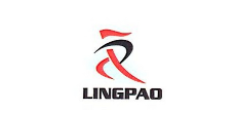
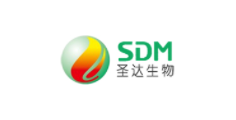




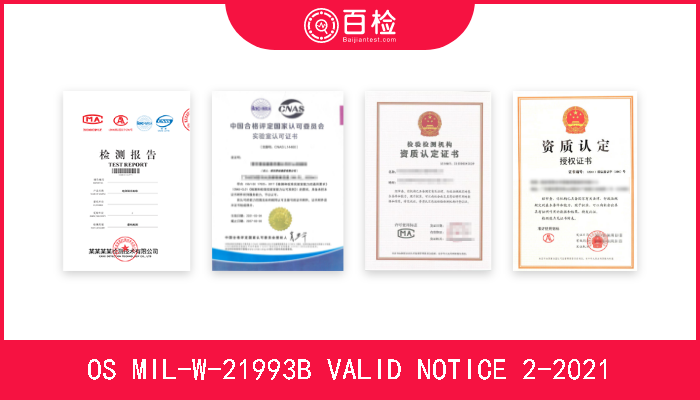
0932009.png)

